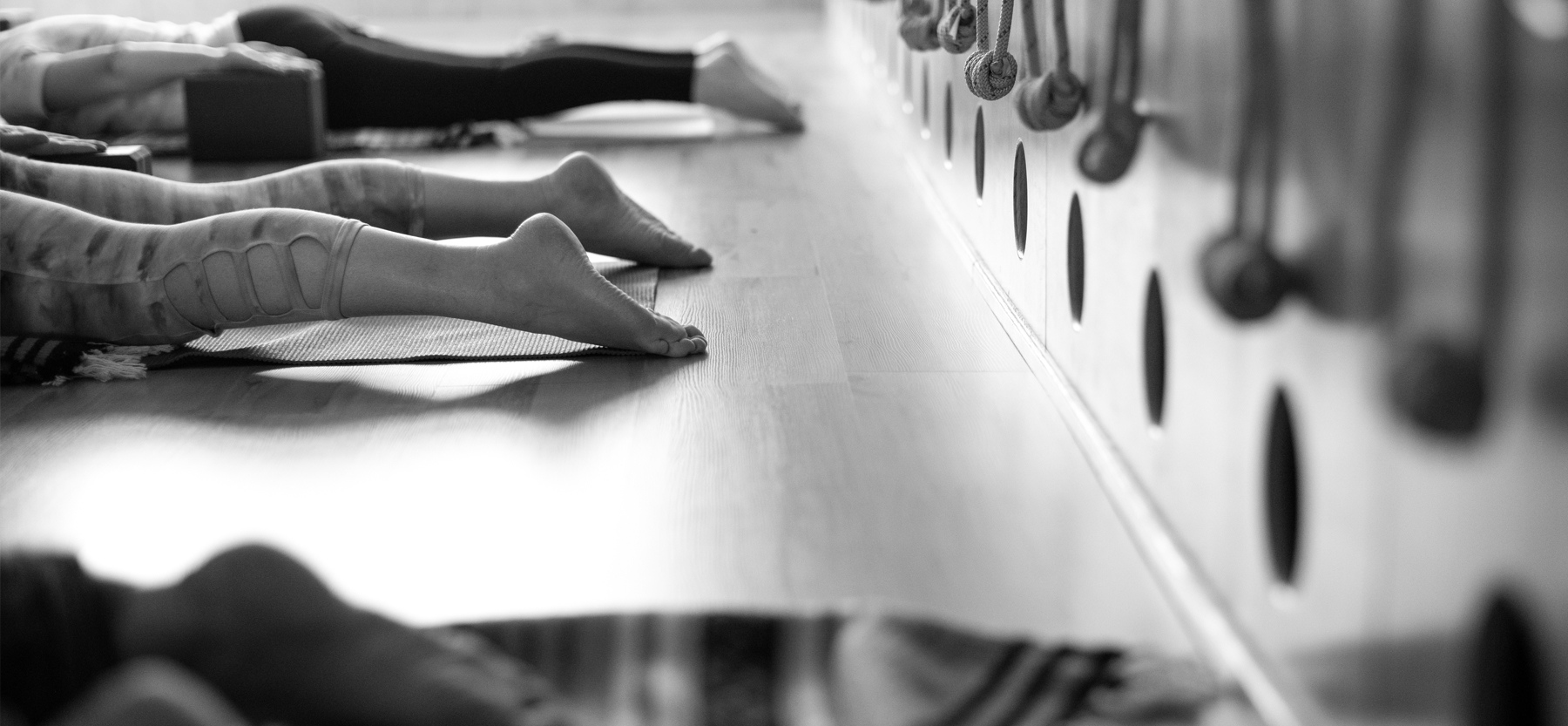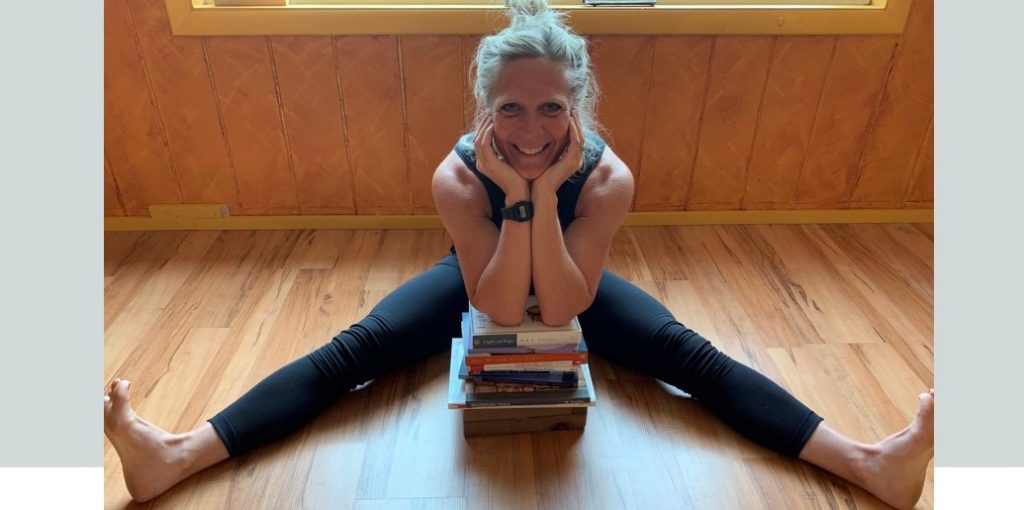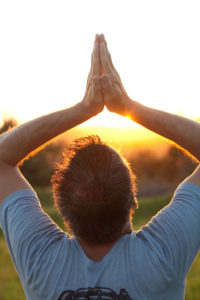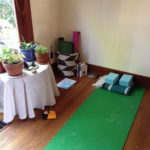Omaha Yoga Path Post
Year End Immersion: 2024 Yoga Workshop
Walking the Path
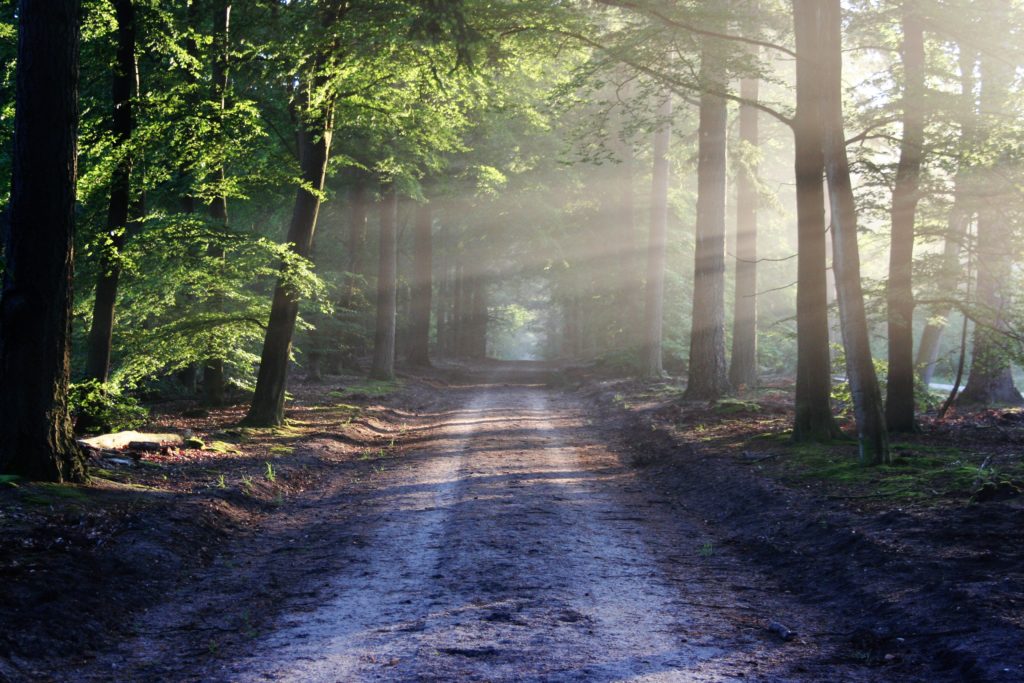
“Roads were made for journeys, not destination.” Confucius
A Yoga Workshop
Thursday, December 26 through Sunday, December 29, 2024
To register see below
“No step is wasted on this path, and even a little progress is freedom from fear.” Bhagavada Gita
There’s a difference between knowing the path and walking the path. We all make choices about which way we’ll go. Whether it is getting coffee in the morning or deciding how we want to move though life. But in case we’re involved in practicing the discipline of yoga. Moving in such a direction is bound to have impact on the road we good down. Workshops such as this year- end immersion helps us walk down the path with more focus and awareness. Such treks allow is to grow and expand in new ways. So with all that in mind, please consider joining us to realize that the journey is the Path.
This of course it aligned with philosophy and practice of yoga. So during the course of this immersion we will practicing poses (asana), breath awareness(pranayama), meditation(dhyana), and relaxation (savasana).

Take this opportunity to enrich your practice with four consecutive days of yoga classes. This yoga workshop will be tailored for practicing students of all levels of yoga. The classes will include a study of postures, breath, and meditation to aid students in the enhancement of their personal practice. Though it is not necessary to attend all classes in succession, best results will come with sustained attendance. All classes will be taught by Mark Watson founder of The Yoga Path.
Who Should Attend: Anyone currently practicing yoga or attending yoga class, seeking to foster or enhance their own personal practice.
Class Times
Thursday evening \ asana & relaxation 5:30 – 8:00 p.m.
Friday evening \ asana & pranayama 5:30 – 7:30 p.m.
Saturday morning \ pranayama & asana 8:00 – 10:00 a.m.
Sunday morning \ asana & meditation 9:00 – 10:30 a.m.
Class Pricing
Entire workshop $105
Three classes $90
Two classes $64
One class $35
Please specify the classes you will be attending.
Register online or pay in-person
For questions email omyogapath@gmail.com, or call 402.905.2295
Class size is limited so register early
“Real solitude comes from a stable heart that does not get carried away by the pull of the crowd, nor by sorrows of the past, worries about the future, or excitement or stress about the present.” Thich Nhat Hanh
Yoga Concepts
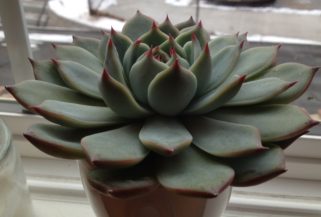
In Patanjali’s Yoga Sutra, the eightfold path is called ashtanga, which literally means “eight limbs” (ashta=eight, anga=limb). These eight steps basically act as guidelines on how to live a meaningful and purposeful life. They serve as a prescription for moral and ethical conduct and self-discipline; they direct attention toward one’s health; and they help us to acknowledge the spiritual aspects of our nature.
Yamas – Restraints
Ahimsa -non-harming
Satya – non-falsehood
Asteya – non-stealing
Brahmacharya – non-indulgence
Aparigraha – non-possessiveness
Niyama – Observances
Saucha – purity/cleaniness
Santosa – contentment
Tapas – discipline/heat
Svadhyaya – study/reflection
Isvara pranidhana – devotion to the lord(aspirations)
Asana – Posture
Pranayama – Breath Control
Pratyahara – Sense Control
Dharana – Awareness
Dhyana – Attention
Samadhi – Communion/Absorption/ Stillness
Standing Poses

Here is a sheet displaying most of the common standing poses practiced in yoga. Working standing poses is one of the best ways to build and enhance your practice. When you can be stable and strong in these positions all other poses will be accessible to you.
Deep Relaxation
Deep Relaxation Practice
At the Yoga Path we are practicing being with the body. One of the ways to best do this to take time to rest and intentionally making a time to rest, and totally relax. Here are three links to help you do this. Please set aside a time to lie down and devote yourself to this practice. Turn off everything and make certain you give you time to taking care of yourself
- This is a 46 minute total relaxation narrated by Sr. Chau Nghiem
- This is a 35 minute total relaxation narrated by Sr. Dan Nghiem
- This is an 11 minute total relaxation narrated by Sr. Chan Khong
They are from the Plum Village tradition. Enjoy!
Why do this?
Resting is a precondition for healing. When animals in the forest get wounded, they find a place to lie down, and they rest completely for many days. They don’t think about food or anything else. They just rest and they get the healing they need. When we humans become overcome with stress, we may go to the pharmacy and get drugs, but we don’t stop. We don’t know how to help ourselves.
Stress accumulates in our body. The way we eat, drink, and live takes its toll on our well-being. The practice of deep relaxation provides an opportunity for our body to rest, to heal, and to be restored. We relax our body, give our attention to each part in turn, and send our love and care to every cell.
If you have trouble sleeping enough, the deep relaxation practice can compensate. Lying awake on your bred, you may like to practice total relaxation and follow your breathing in and breathing out. Sometimes it can help you to get some sleep. But even if you don’t sleep, the deep relaxation practice can help because it can nourish you and allow you to rest.
Mindful breathing, total relaxation of the body can be done at home at least once a day. It may last twenty minutes or longer. We can practice it either with a group, with our family or alone. When we do deep relaxation in a group, one person can guide the exercise using the guide below or some variation of it. When you do deep relaxation on your own, you may like to record an exercise to follow as you practice. One member of the family can lead the session for the whole family, perhaps in the living room.
Significance of 108
The Significance of the number 108?
Why do we do 108 Sun Salutations in Yoga…?
Here are many of the symbolism for 108:
A japa mala or mala is an eastern rosary with 108 beads. The mala is used both in Hinduism and Buddhism for counting mantras, chants or prayers. 108 has been a sacred number for a long time, and this number is explained in many different ways.
Traditionally, Buddhist have 108 beads, representing the 108 human passions that Avalokiteshvara assumed when telling the beads. This number ensures a repetition of a sacred mantra at least 100 times, the extra beads allowing for any omissions made through absentmindness in counting or for loss or breakage of beads.
Sometimes smaller divisions can be used: 108 is divided in half, third, quarter, or twelfth, so some malas have 54, 36, 27, or 9 beads.
Regardless of the meaning of 108, it is important that if a mala is used to count mantras, the mantra be given sincerity, devotion, feeling, and full attention.
108 may be the product of a precise mathematical operation (e.g. 1 power 1 x 2 power 2 x 3 power 3 = 108) which was thought to have special neurological significance.
- POWERS of 1, 2 & 3 IN MATH: 1 to 1st power=1; 2 to 2nd power=4 (2×2); 3 to 3rd power=27 (3x3x3). 1x4x27=108
- SANSKRIT ALPHABET: There are 54 letters in the Sanskrit alphabet.
Each has masculine and feminine, shiva and shakti. 54 times 2 is 108. - HARSHAD NUMBER: 108 is a Harshad number, which is an integer divisible by the sum of its digits (Harshad is from Sanskrit, and means “great joy”)
- DESIRES: There are said to be 108 earthly desires in mortals.
- LIES: There are said to be 108 lies that humans tell.
- DELUSIONS: There are said to be 108 human delusions or forms of ignorance.
- 9 x 12: Both of these numbers have been said to have spiritual significance in many traditions. 9 times 12 is 108. Also, 1 plus 8 equals 9. That 9 times 12 equals 108.
- TIME: Some say there are 108 feelings, with 36 related to past, 36 related to present, and 36 related to future.
ASTROLOGY: There are 12 constellations, and 9 arc segments called namshas or chandrakalas.
9 times 12 equals 108. Chandra is moon, and kalas are the divisions within a whole.
PLANETS AND HOUSES: In astrology, there are 12 houses and 9 planets. 12 times 9 equal 108.
Gopis of Krishna: In the Krishna tradition, there were said to be 108 gopis or maid servants of Krishna.
SUN AND EARTH: The diameter of the sun is 108 times the diameter of the Earth.
NUMERICAL SCALE: The 1 of 108, and the 8 of 108, when added together equals 9, which is the number of the numerical scale, i.e. 1, 2, 3 … 10, etc., where 0 is not a number.
DANCE: There are 108 forms of dance in the Indian traditions.
PYTHAGOREAN: The nine is the limit of all numbers, all others existing and coming from the same. ie: 0 to 9 is all one needs to make up an infinite amount of numbers.
STAGES OF THE SOUL: Atman, the human soul or center goes through 108 stages on the journey.
SRI YANTRA: On the Sri Yantra there are marmas where three lines intersect, and there are 54 such intersections. Each intersections has masculine and feminine, shiva and shakti qualities. 54 x 2 equals 108. Thus, there are 108 points that define the Sri Yantra as well as the human body.
ANAHATA (HEART) CHAKRA: The chakras are the intersections of energy lines, and there are said to be a total of 108 energy lines converging to form the heart chakra. One of them, sushumna leads to the crown chakra, and is said to be the path to Self-realization.
MARMAS: Marmas or marmastanas are like energy intersections called chakras, except have fewer energy lines converging to form them. There are said to be 108 marmas in the subtle body.
MERU: This is a larger bead, not part of the 108. It is not tied in the sequence of the other beads. It is the guiding bead, the one that marks the beginning and end of the mala.
BUDDHA’S FOOTPRINT: All Buddhists accept the Buddha Footprint with its 108 Auspicious Illustrations. These areas are considered to have been marked on the Buddha’s left foot when his body was discovered.
BUDDHISM: 108 beads on the Hindu maalaa {rosary} 108 Arhats or Holy Ones
HINDUISM: 108 Gopis {consorts} of Lord Krishna 108 Holy places for Vaishnavas 108 beads on the Japa maalaa {rosary} 108 Upanishads 108 Divyadeshes – Divine or Sacred Tirtha throughout India and Nepal 108 sacred water taps in Muktinath – Nepal
ISLAM: The number 108 is used in Islam to refer to God.
JAIN: In the Jain religion, 108 are the combined virtues of five categories of holy ones, including 12, 8, 36, 25, and 27 virtues respectively.
SIKH: The Sikh tradition has a mala of 108 knots tied in a string of wool, rather than beads.
Chinese: The Chinese Buddhists and Taoists use a 108 bead mala, which is called su-chu, and has three dividing beads, so the mala is divided into three parts of 36 each.
SHOSHU BUDDHIST: 108 beads in their malas.
They implement the formula: 6 x 3 x 2 x3 = 108 6 senses [sight, sound, smell, taste, touch, thought]
3 aspects of time [past, present, future]
2 condition of heart [pure or impure]
3 possibilities of sentiment [like, dislike, indifference]
TAI CHI CHU’AN
108-form Wu family Tai Chi Chuan
The different slow motion solo sequences of T’ai Chi Ch’uan are the best known manifestation of T’ai Chi for public. In English, called the hand form or just the form; in Mandarin it is called ch’uan: 拳 They are performed slowly by beginners and are said to promote concentration, condition the body and acquaint students with the inventory of motion techniques for more advanced styles of martial arts training.
TANTRA SHASTRA: 108 Pitha {Sacred Places} The story goes that Lord Shiva was in deep and incessant meditation. His asceticism was creating great heat in the universe. All existence was in peril and Lord Brahma was deeply concerned.
Lord Brahma asked the Mother of the Universe, Maa Shakti, to use her strength and wile to seduce Lord Shiva. Maa Shakti agreed and was born as Sati, daughter of Shri Daksha. Lord Shiva was so entranced by Sati’s asceticism and extraordinary beauty that he took human form and they were married. Years later, at a feast, Sati’s father insulted Lord Shiva. Sati was so humiliated that she began a deep meditation which led to her immolation. Lord Shiva was completely heartbroken. He reached into the sacrificial fire and pulled out as much of His beloved’s body as he could grab. As He ascended to heaven, bits of Sati’s body fell to earth. 108 bits to be precise! In time, these places were acknowledged and worshipped.
SANATANA DHARMA: In a book by Khurana, the explanation mirrors original Vedic justifications: A circle has 360 degrees, which when multiplied by 60 gives 21,600 minutes in a circle. 60 comes from the 60 ‘ghatis’ which Sanatana Dharmiks believe in. One ghati is equal to 24 minutes and 60 ghatis come to 24 hours.
One ghati is divided into 60 parts or ‘palas’. So the 60 ghatis multiplied by 60 palasa comes to 3,600. This is further multiplied by 60 (becase a pala contains 60 vipalas) which gives us 21,600. Half of this is for the day, and the other half for the night. So, 21,600 divided by 2 gives us 10,800. For practical purposes, we use 108.
Using the number 108 helps us coordinate the rhythm of time and space & we remain in harmony with the spiritual powers of nature.
108 UPANISHADS FROM MUKTIKOPANISHAD: Rigveda(10): Aitareya , Atmabodha, Kaushitaki, Mudgala, Nirvana, Nadabindu, Akshamaya, Tripura, Bahvruka, Saubhagyalakshmi.
Yajurveda(50): Katha, Taittiriya , Isavasya , Brihadaranyaka, Akshi, Ekakshara, Garbha, Prnagnihotra, Svetasvatara, Sariraka, Sukarahasya, Skanda, Sarvasara, Adhyatma, Niralamba, Paingala, Mantrika, Muktika, Subala, Avadhuta, Katharudra, Brahma, Jabala, Turiyatita, Paramahamsa, Bhikshuka, Yajnavalkya, Satyayani, Amrtanada, Amrtabindu, Kshurika, Tejobindu, Dhyanabindu, Brahmavidya, YogakundalinI, Yogatattva, Yogasikha, Varaha, Advayataraka, Trisikhibrahmana, mandalabrahmana, Hamsa, Kalisantaraaa, Narayana, Tarasara, Kalagnirudra, Dakshinamurti, Pancabrahma, Rudrahrdaya, SarasvatIrahasya.
SamaVeda(16): Kena, Chandogya, Mahat, Maitrayani, Vajrasuci, Savitri, Aruneya, Kundika, Maitreyi, Samnyasa, Jabaladarsana, Yogacudaman, Avyakta, Vasudevai, Jabali, Rudrakshajabala.
Atharvaveda(32): Prasna , Mandukya, Mundaka, Atma, Surya, Narada-Parivrajakas, Parabrahma, Paramahamsa-Parivrajakas, Pasupatha-Brahma, Mahavakya, Sandilya, Krishna, Garuda, Gopalatapani, Tripadavibhuti-mahnarayana, Dattatreya, Kaivalya, NrsimhatapanI, Ramatapani, Ramarahasya, HayagrIva, Atharvasikha, Atharvasira, Ganapati, Brhajjabala, Bhasmajabala, Sarabha, Annapurna, TripuratapanI, Devi, Bhavana, SIta.
Joseph Campbell says it’s 1+0+8 = 9, the number of the goddess.
Or one can look at 1, 0, and 8 as:
1 = God or higher Truth
0 = emptiness or completeness in spiritual practice,
8 = infinity or eternity
Tea on the Brain
Been a long time since making an entry in this category — tea, but I always marvel at the relationship of tea in Buddhism, Yoga, and meditation. Now here is a neurological explain for human predilection for Camellia sinensis.
[vimeo 114499613 w=500 h=375]

